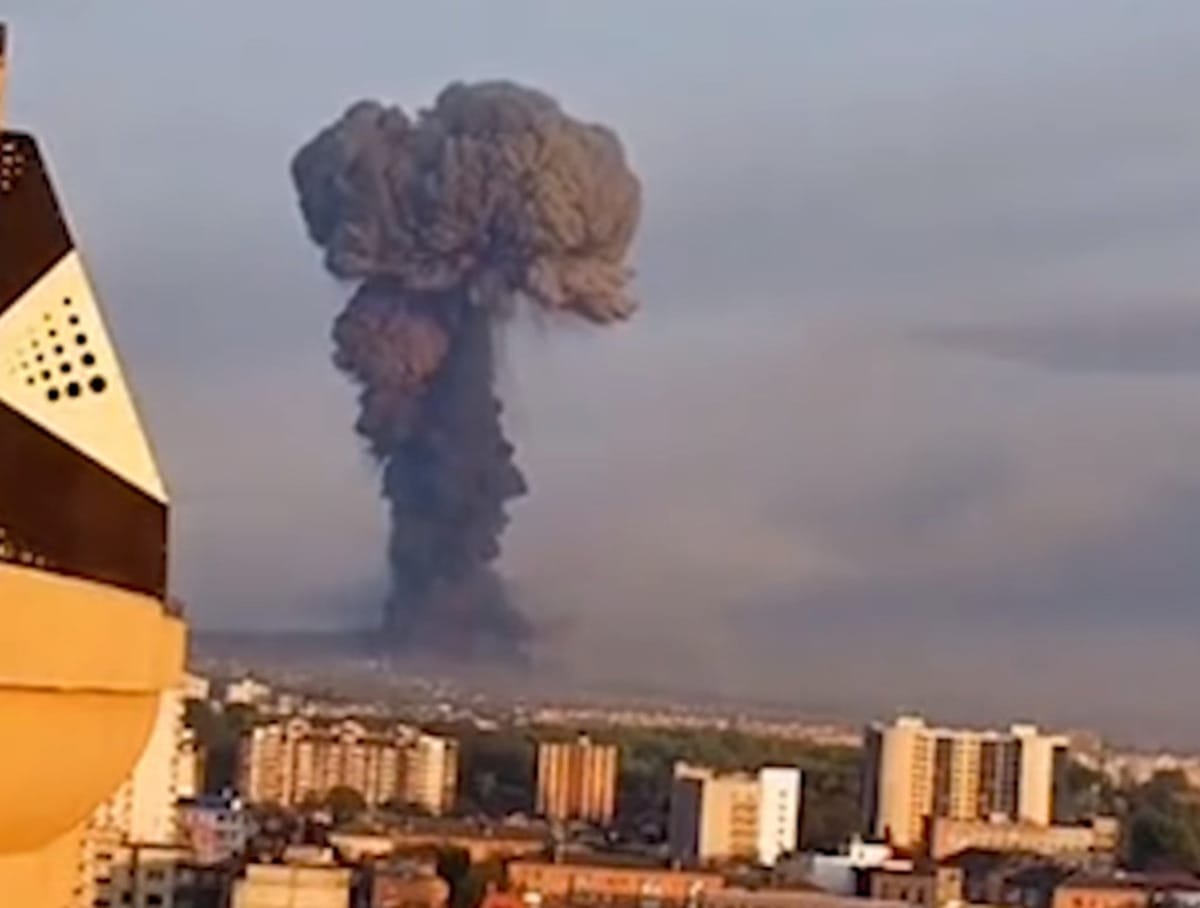On May 19, 2023, Secretary of the Security Council of the Russian Federation Nikolai Patrushev said that a radioactive cloud was moving from Ukraine to Western Europe, and Poland had already noticed a surge in radiation. Previously, Russian media wrote about the same thing. We decided to check if this is true.
About the radioactive threat Nikolai Patrushev spoke May 19, 2023 at a meeting in Syktyvkar. According to him, this result was caused by Russian missiles hitting a warehouse near Khmelnitsky, where shells with depleted uranium supplied by Ukraine’s allies were stored. “Their destruction led to the radioactive cloud heading towards Western Europe. And in Poland, an increase in radiation has already been recorded,” Patrushev said. On May 17, two days before the speech of the Secretary of the Security Council of the Russian Federation, major Russian media wrote about the increase in radiation in Poland: for example, “Komsomolskaya Pravda", "Constantinople", "Moskovsky Komsomolets", "Arguments and facts", TV channel "360".
Radiation in Khmelnitsky
The first reports of increased radiation levels appeared after a Russian missile attack on the city of Khmelnytsky on the night of May 13. The Russian Ministry of Defense limited itself to a laconic comment, informingthat the Ukrainian Armed Forces' ammunition depot was destroyed. Khmelnitsky authorities toldthat as a result of the impact hundreds of houses, both multi-storey and private, were damaged. The strike on the facility near the city caused serious damage to the infrastructure, said the mayor of Khmelnitsky, Alexander Simchishin. Neither Russian nor Ukrainian officials mentioned that the warehouse allegedly contained depleted uranium ammunition. In conditions of hostilities, it is not possible to confirm or refute these allegations.
On supplies of depleted uranium shells to Ukraine from Great Britain reported in March 2023. Russia responded to this expressed his indignation: President Vladimir Putin promised to respond to the fact that “the collective West is already beginning to use weapons with a nuclear component,” and Russian Foreign Minister Sergei Lavrov accused the West of violating humanitarian law. At the same time, depleted uranium in itself does not cause serious damage to humans or the environment; such weapons are included in the arsenal of many armies around the world, including the Russian one.
On May 13, a few hours after the Russian attack, a video of a powerful explosion in Khmelnytsky appeared on social networks.
On May 14, Russian Telegram channels began publishing posts about the increase in background radiation in the Ukrainian city, claiming that this was precisely due to the explosion of depleted uranium ammunition. Bloggers referred to the Ukrainian portal SaveEcoBot, which measures radiation levels. "Russian newspaper"wrote that since May 12, in the Khmelnitsky area, "there has been a jump in the radiation level from 80-100 nanosieverts to 140-160 nanosieverts."
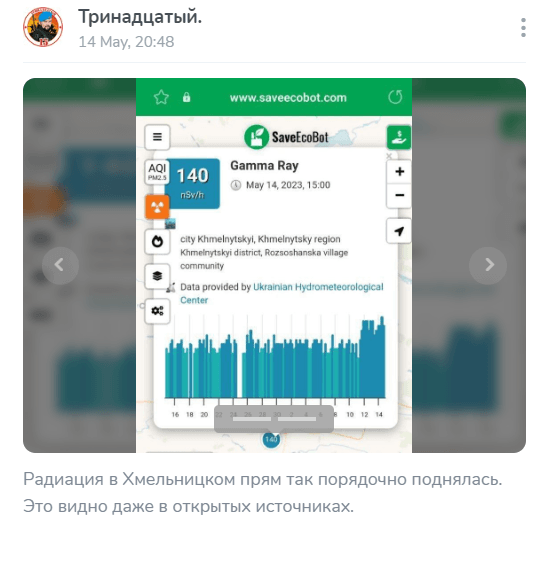
If we discard some inaccuracies in the formulations (it would be correct to indicate gamma radiation in nanosievert per unit of time), the change in background radiation corresponds to the data from the Ukrainian website. For example, on May 13, when a missile strike was carried out, the instruments recorded background radiation of 149 nanosievert/hour (0.14 microsievert/hour).
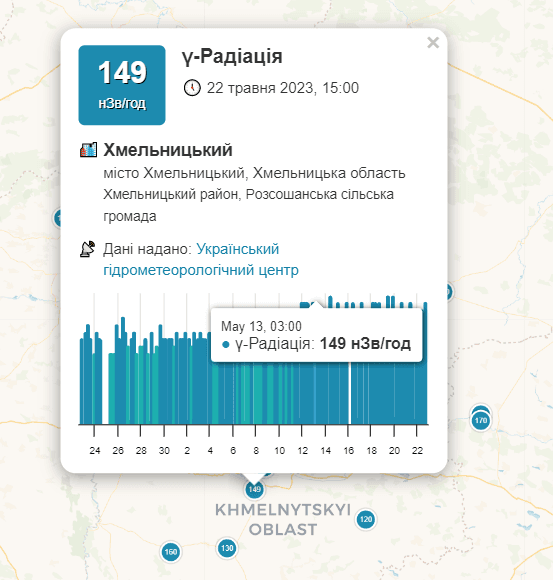
The highest value recently was noted in Khmelnitsky on the evening of May 19, when the background radiation reached 157 nSv/h (0.15 μSv/h).
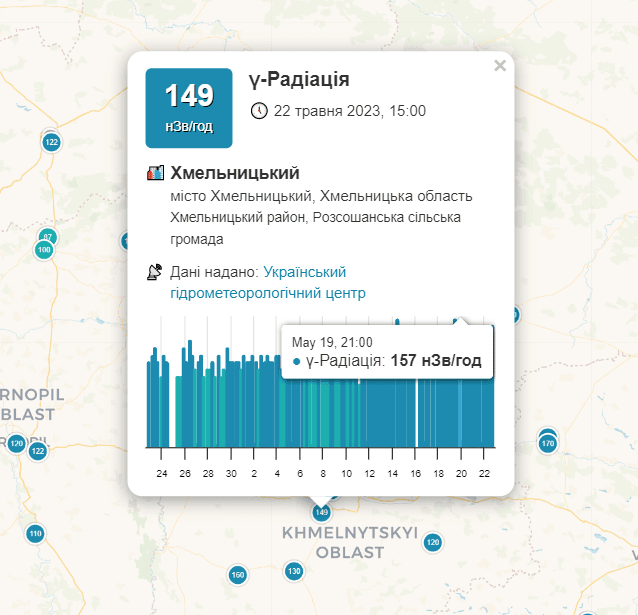
Observers did not record a sharp jump. Moreover, the permissible power equivalent gamma radiation doses counts 300 nSv/h (0.3 μSv/h), and the norm is 150 nSv/h (0.15 mSv/h). For example, in the center of Moscow, according to FSUE Radon, which is part of Rosatom, this indicator, depending on the area, ranges from 70 to 160 nSv/h (from 0.07 to 0.16 μSv/h).
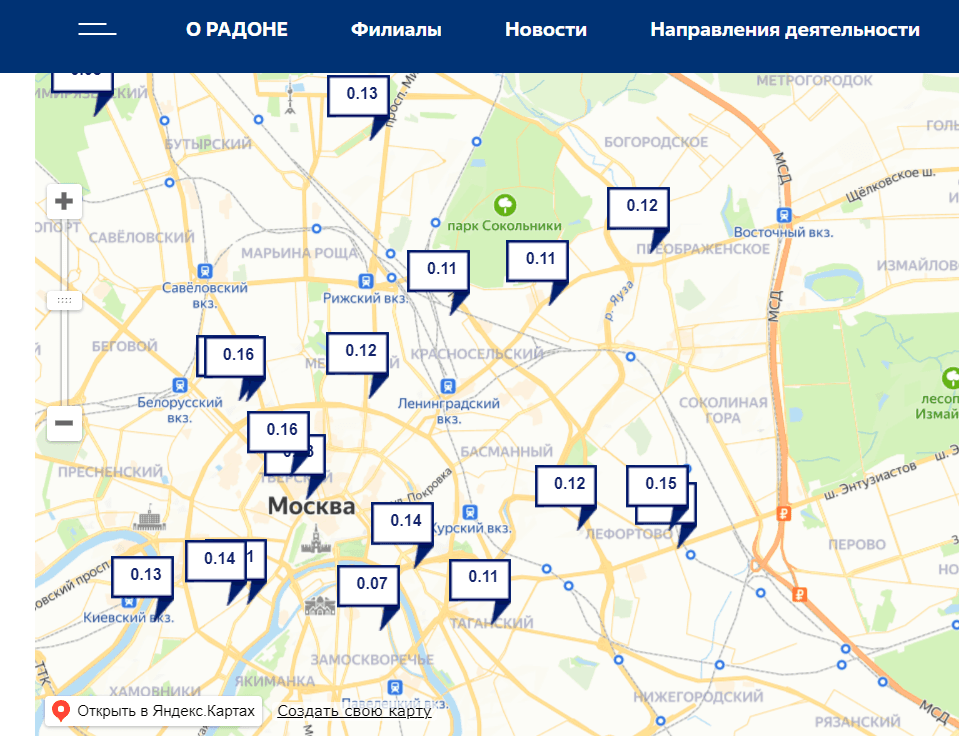
The only part of Ukraine where the equivalent dose rate of gamma radiation significantly exceeds the norm is the areas in the immediate vicinity of the Chernobyl nuclear power plant, contaminated with radiation after the 1986 accident. According to the same SaveEcoBot, this figure reaches 5544 nSv/h (5.54 μSv/h).
Radiation in Poland
May 15 Telegram channel “War of the Worlds Z” suggestedthat soon radioactive particles released into the atmosphere due to the explosion in Khmelnytsky could reach the territory of Poland. The next day, May 16, this assumption became a statement, with reference to data from Polish experts. The earliest post that was found “Verified” is an entry in the Telegram channel “Director for Ukraine"(9.8 thousand views) at 17:30 Moscow time. The author of the post claimed that the day before (that is, May 15) in the Polish city of Lublin, measuring instruments recorded a sharp increase in bismuth levels by 6-7 times. And bismuth, the publication explained, is “a decay product of depleted uranium used in ammunition.” During the evening of May 16, the post, along with a screenshot, first went viral on Telegram channels with a relatively small audience, and then published in his channel Yakov Kedmi, a regular guest of programs on Russian federal television channels. The post on Kedmi’s Telegram channel was read by 1.8 million users, and this post was also referred to as the original source. some media.
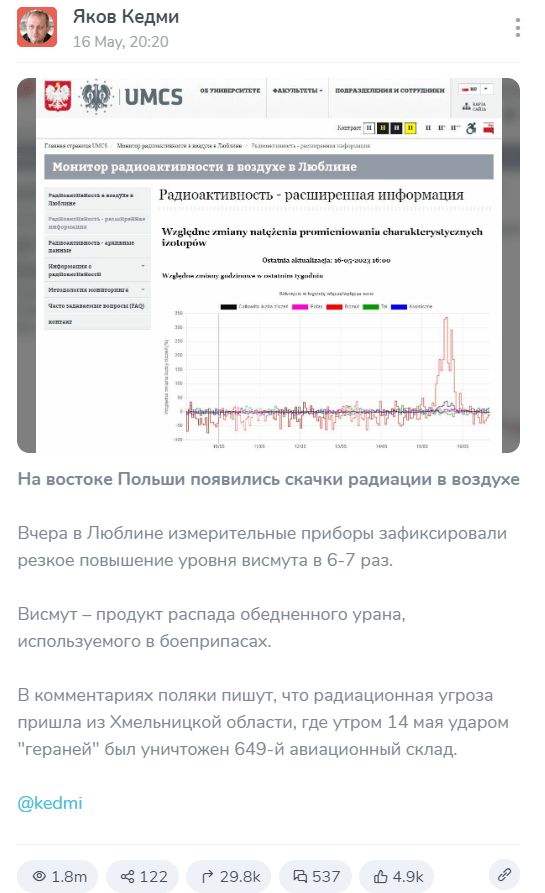
As in the case of background radiation monitoring in Khmelnitsky, the source of publications on Telegram is real: this is data Maria Skłodowska-Curie University of Lublin.
May 15th indeed observed an increase in background radiation in the city relative to the average data for the week.
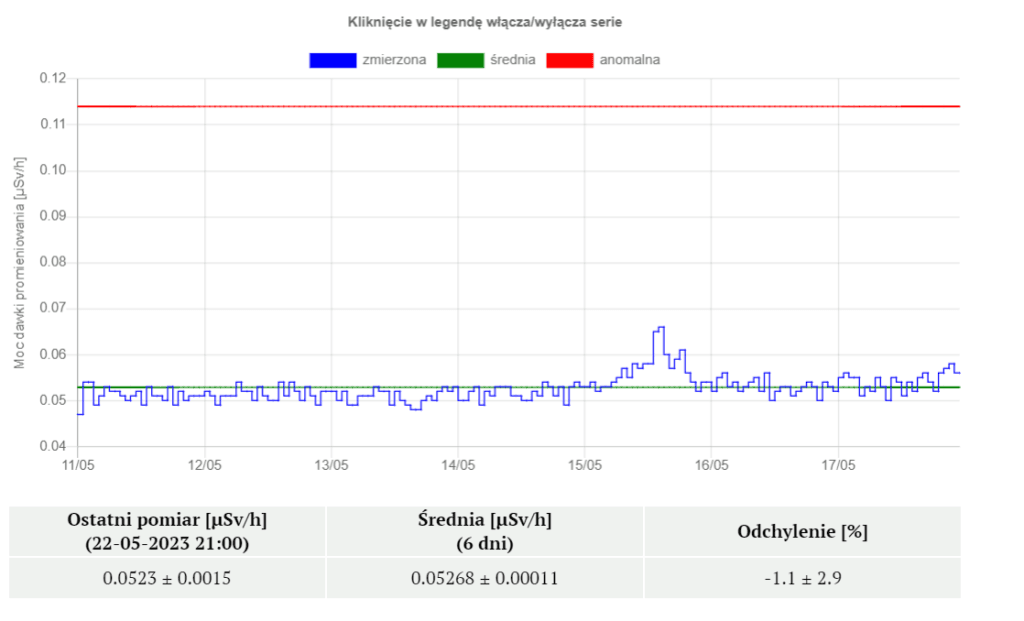
In addition, on May 15, an increase in bismuth levels was actually recorded (in red on the graph).
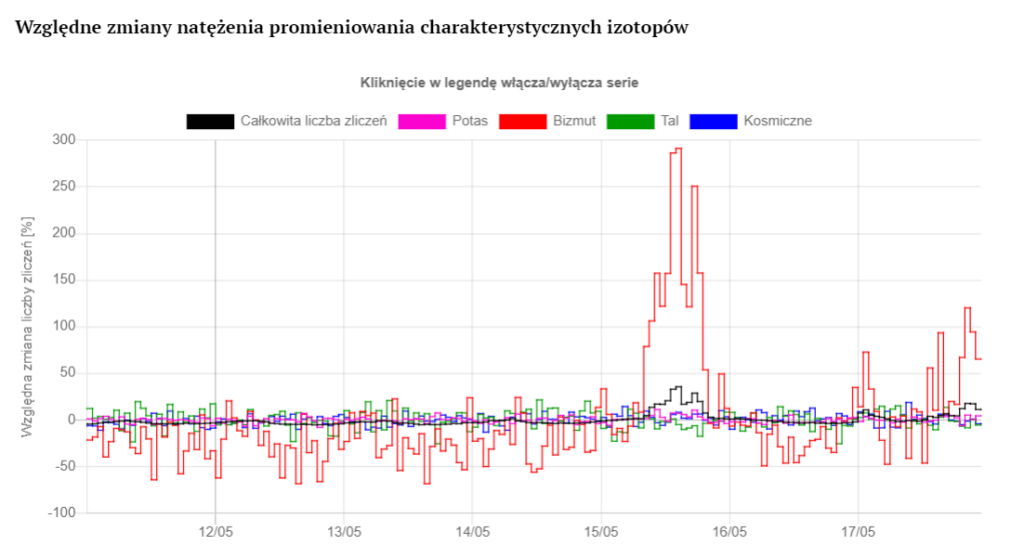
But if you set a longer time period (for example, a month), then the isotope radiation table looks completely different.
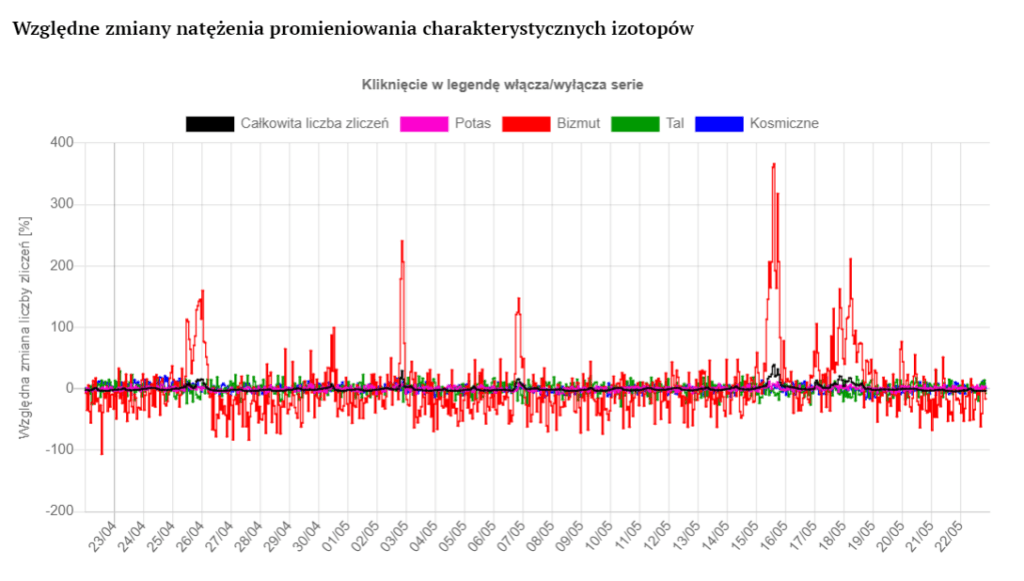
And on the chart for the year (from May 22, 2022 to May 22, 2023), the “sharp jump” that occurred on May 15, 2023 looks insignificant at all.
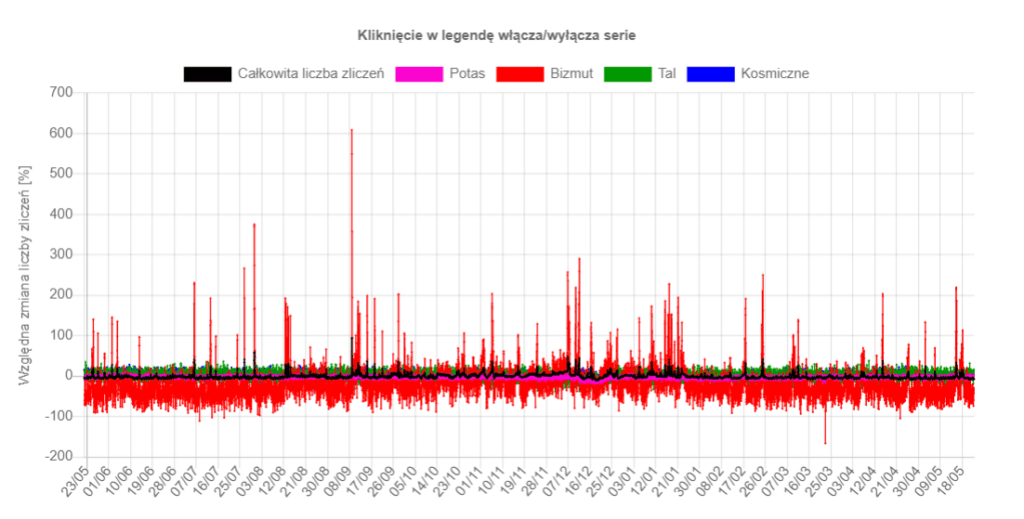
On May 17, Marie Skłodowska-Curie University published a detailed explanation increasing levels of bismuth in the atmosphere. According to university staff conducting observations, this is a natural phenomenon caused by precipitation. “Bismuth-214, produced by the decay of radon gas rising from the ground, is intercepted by falling water droplets, resulting in increased radiation intensity near the soil surface,” the university said in a statement. They note that this is a natural phenomenon, and the accompanying increase in background radiation does not cause significant harm to health.
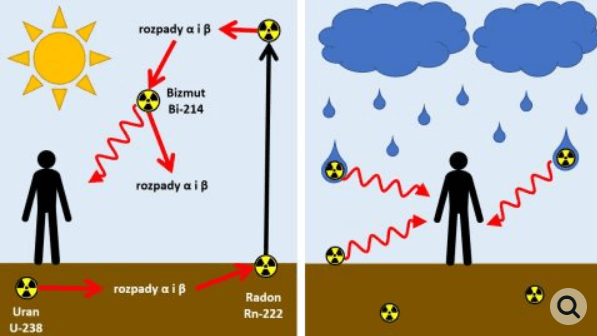
The nuclide bismuth-214 is the result of the decay of uranium-238, which in turn enters the air from the soil. The increased content of uranium-238 in nature is due to the combustion of charcoal. Bismuth-214 is contained in the air in the form of aerosols and dust, and the concentration of the nuclide depends on the direction of the wind and precipitation. The main conclusion that experts come to is this: changes in the radioactivity of bismuth-214 depend on weather conditions in the area under study.
On the same day, May 17, with a similar statement spoke and the National Atomic Energy Agency of Poland: the level of radiation in the country is within normal limits, it is not dangerous to human health and the environment, and the increased content of bismuth in the air is explained by natural factors.
With these conclusions agree and Russian scientist Boris Zhuikov, head of the isotope complex Institute of Nuclear Research RAS. He called reports of a “radioactive cloud approaching Europe” fake. Zhuikov explained that depleted uranium cannot contain bismuth-210 or bismuth-214, as well as pure uranium-238. “It takes many thousands of years for bismuth-210 or bismuth-214 to accumulate in pure uranium-238. These radionuclides in the atmosphere can come from uranium found in nature,” explains the scientist. In addition, he draws attention to the fact that the radiotoxicity of these bismuth isotopes is low, their concentration in the air is many orders of magnitude lower than the maximum permissible. In turn, the toxicity of uranium itself is no higher than that of mercury or lead, and it is truly harmful if uranium is taken orally.
Thus, reports about a radioactive cloud, which allegedly formed after the explosion of an ammunition depot in Ukraine and is now moving towards Europe, are not true. Data from measuring instruments, both in Ukraine and in Poland, do not allow us to talk about any significant jump in background radiation.
Cover photo: screenshot “Verified”
Not true
Read on the topic:
- StopFake. Fake: After a missile strike in Khmelnitsky, an “increased background radiation” was recorded.
- "Vox Ukraine". False: Radiation threat due to explosions in Ternopil and Khmelnitsky.
- "Myth Detector". Did the explosion in Khmelnitsky cause an increase in radiation levels in Poland?
If you find a spelling or grammatical error, please let us know by highlighting the error text and clicking Ctrl+Enter.


